A stroll along the pretty modern promenade corrals you between the new apartment blocks and the azure sea. The blue water against the white of the shoreline structures is dazzling to your eyes. The popular resort town of Nha Trang exudes a contemporary vibe, but simmering beneath this shell is an ancient history that is older than the country of Vietnam. North of where you now stand is the ancient Cham complex of Po Nagar. Its antique brick towers look out from Cù Lao Mountain over the Vietnamese Riviera that was called Kauthara when they were built. Breaking from your seafront route, you head inland towards the hills of the city. Soon you are standing in the entrance of a Buddhist complex, much different from the Hindu towers built when the area was part of the Kingdom of Champa. Although they both stand on hills that overlook Nha Trang, they represent very different stages in Vietnamese history. Here, at Chùa Long Sơn (Long Son Pagoda), you have a window into 20th century Vietnam and its most turbulent times.

Chùa Long Sơn was built under the auspices of the first of its only three abbots. Thích Ngộ Chí oversaw the construction of the first temple here in 1886, when he was just 30 years old. An interesting character, he was a local anti-French freedom fighter prior to being ordained into the sangha (priesthood). The original structure was built further up the hill from its current incarnation that rests at the foot. It was then called Đăng Long Tự, but the sanctuary was only to last 14 years before being torn down by a violent tropical storm. The reconstruction that took place in 1900 created the bare bones of what you see before you today. Despite having been damaged in the Vietnam War and having experienced various obstacles in it restoration, it remains resilient and potent as ever.
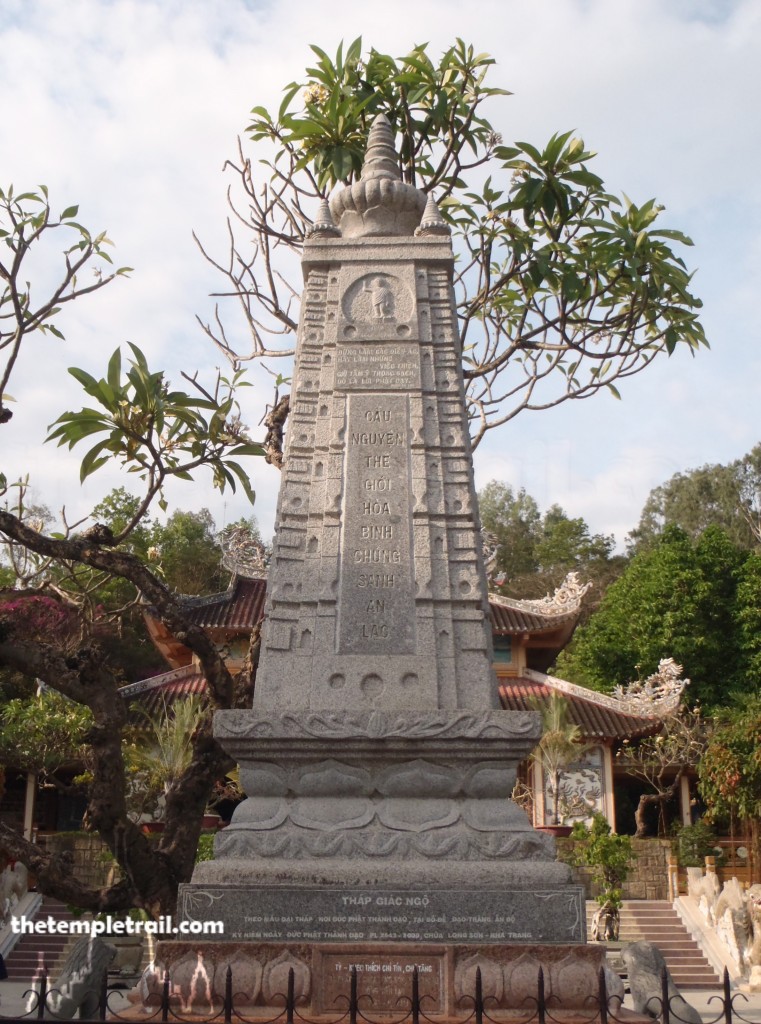
Entering the grounds through a large gateway, you find yourself in a pretty courtyard filled with various stone planters of shrubbery. In the centre of your path is a stone stupa-like tháp (tower). The structure is called the Tháp Giác Ngộ and is vaguely reminiscent of the temple at Bodhgaya in India. The monument was donated to mark the millennium in 2000. This is a sign of things to come in this temple where monks are revered very highly and monuments donated often. Statues of stone lions surround a small pond that sits in front of a screen that displays a mosaic dragon made up of ceramic and glass shards.
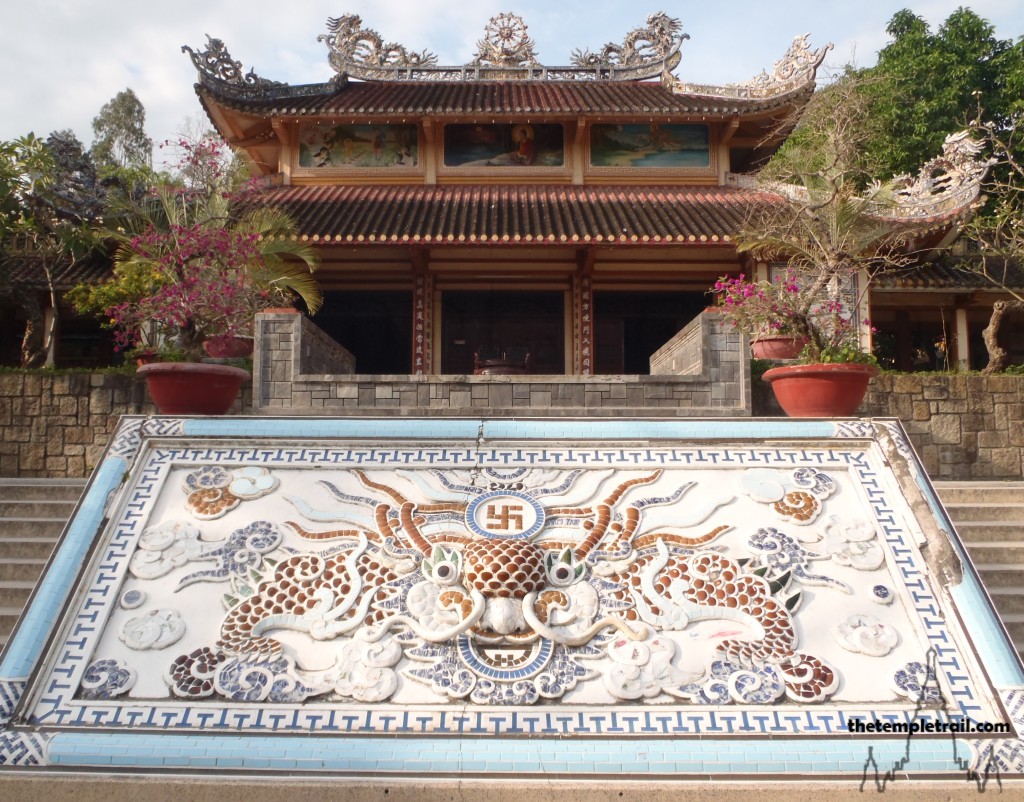
The mosaic and Chinese-style dragon theme is mirrored in the bannisters and front of the temple hall that you see directly behind the screen. Climbing the stairs, the Chinese influence is clear in the temple creatures. The dragons that make the rail of the bannister indicate the strong connection that Vietnamese culture has with China. At the top, you make your way to the artful open platform in front of the building. It is quite modern in its conception and standing on it, you have a view across the courtyard to the gateway. Turning around to face the temple, you see a pair of mosaic kỳ lân. This is another loan from Chinese culture. It is called a Qilin in China and is a bearer of good tidings and auspicious births. The two ‘Chinese unicorns’, point your way into the intricate building. Above the entrance, murals of Sakyamuni (Gautama Siddhartha – the historical Buddha) adorn the building. The ornate roof has dragons and the Buddhist Wheel of Law crowning it.
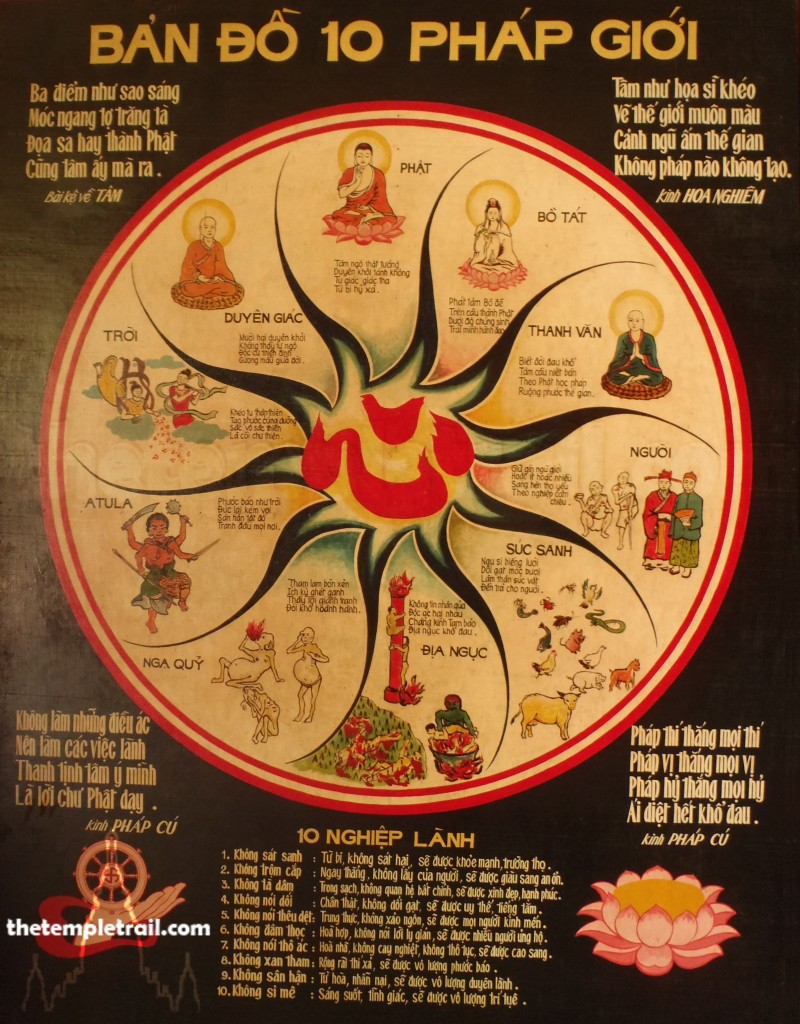
Walking into the hall, you feel a contemporary hand has been at work. The modern feel of the temple is due to the various works that have been done to it due to necessity. The important temple has been the headquarters of the Khánh Hòa Province Buddhist Association since 1936 and in 1940, it was felt that it should be expanded. During the Vietnam War, the temple was damaged quite badly and in 1971 more restorative works were required. The architect Võ Đình Diệp was engaged and work began. The end of the war, the Fall of Saigon briefly stalled the process, but by 1975, things were back on track. The communist regime did not hamper the work, as the Buddhists made up the majority of their support. During the presidency of Ngô Đình Diệm, they were persecuted in favour of his own Roman Catholic support base. The suppression of the Buddhists as ‘communist sympathisers’ and Việt Cộng supporters, was a key factor in the downfall of his brutal regime in South Vietnam.
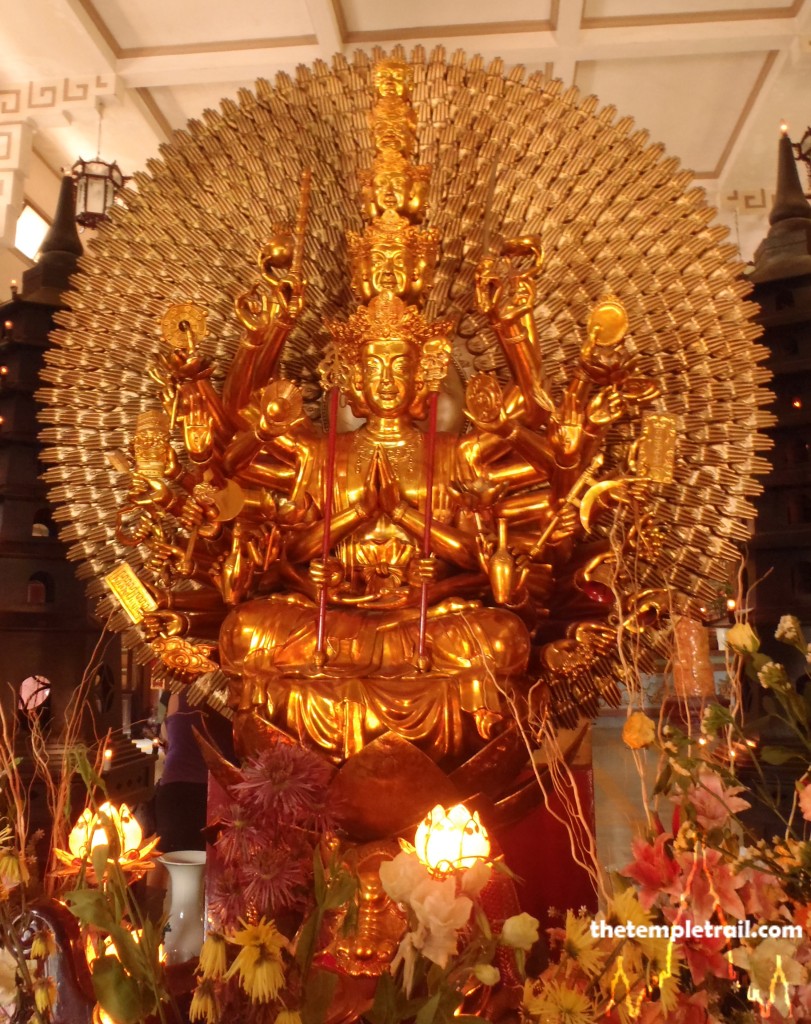
Immediately to your left, upon entering the hall is the Vietnamese version of the various planes of existence. The ten realm system shows all levels of rebirth, from Hell to Buddhahood. After taking in the infographic, you continue into the hall. The jewel of the temple is the wonderful gold lacquered statue of the thousand hand Quan Âm (Guānyīn) that sits near the front of the hall. The Bodhisattva of mercy is a marvellous figure and each hand and tool has been crafted with the highest degree of workmanship. The shimmering mandala of hands frames the statue with total balance. After wandering in the light and airy hall, seeing the dragon wrapped pillars at the main altar and contemplating the realms, you decide to move up to the next level of the temple.
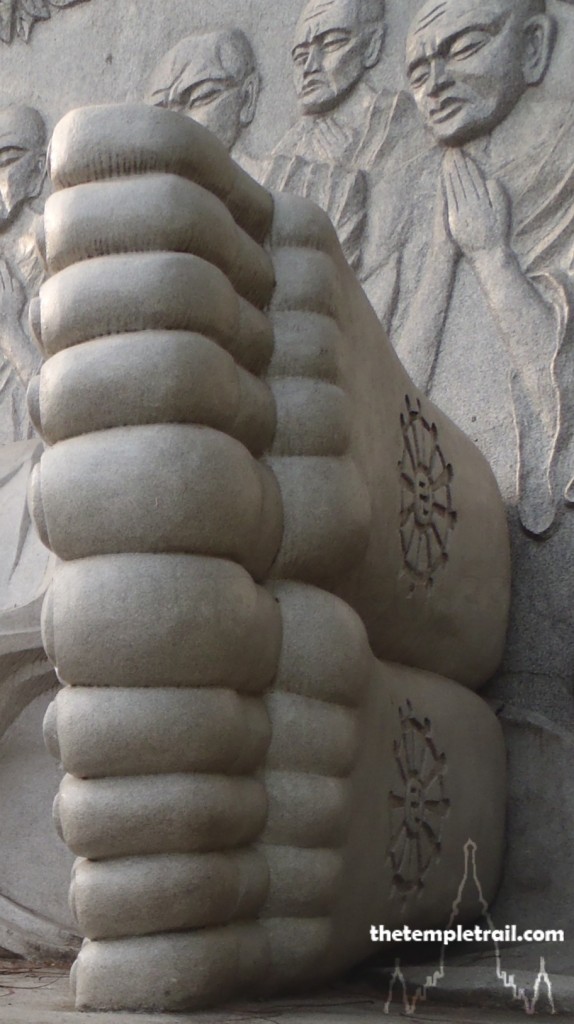
To the right of the temple, a set of 152 stone steps climb the hillside. You begin to trace your way up towards where the original temple lay. As you get to the halfway point, you reach a plateau that leads to another modern addition to this eclectic temple. The stone statue of Buddha reclining in parinirvāṇa is highly unusual for Vietnam, but is strangely fitting here in the side of the hill. In neighbouring Thailand, this image is very popular and is often on the main altar of temples. Here in Vietnam, it is commonly replaced with an image of the child Buddha having the heavens and earth witness his birth. The huge statue representing the death of Sakyamuni is inscribed in Chinese and Thai along the base. The sangha are carved in relief behind the resting Buddha. Their forlorn faces being the antithesis of the Buddha’s own blissful expression. Having rested alongside the Buddha, you continue upward to the peak of the hill.
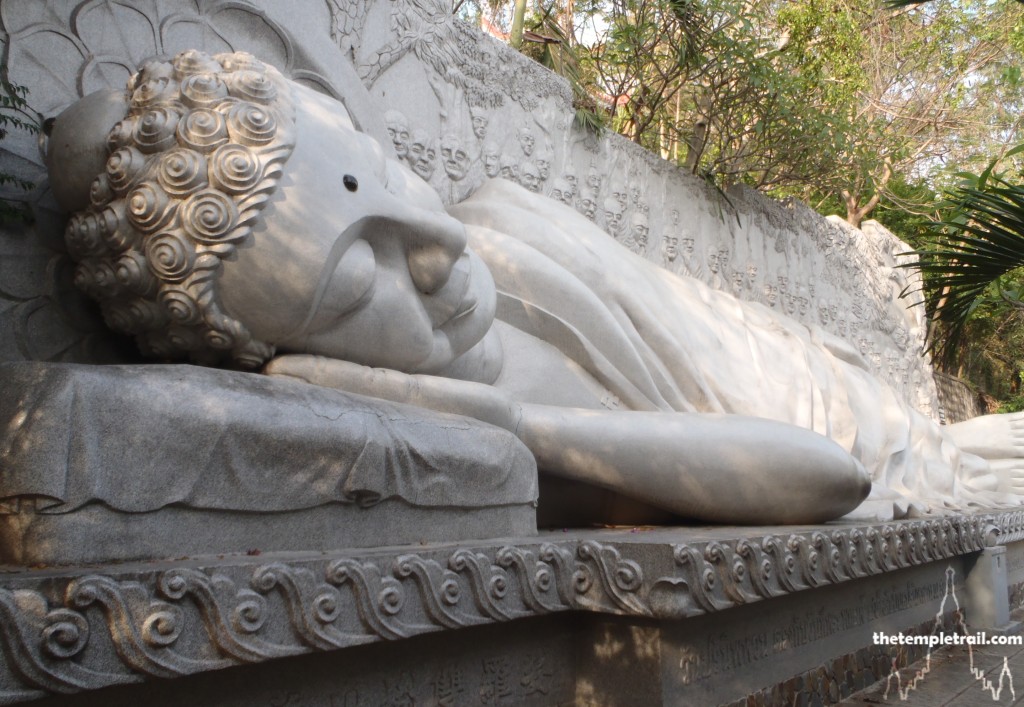
A huge white statue begins to appear as you climb the final steps. This is the crowning glory of the temple; a sight that can be seen from all over the city and is located on the spot of the original temple. Sitting on his pedestal, the concrete statue of Sakyamuni is in an attitude of meditation, with both massive hands on his lap. The 14-metre-tall figure sits on a 10-metre-tall lotus base, making it the tallest in Vietnam. The statue is a hugely political piece and was cast by the sculptor Kim Điền in 1964, following the coup that ousted and assassinated Ngô Đình Diệm in 1963.
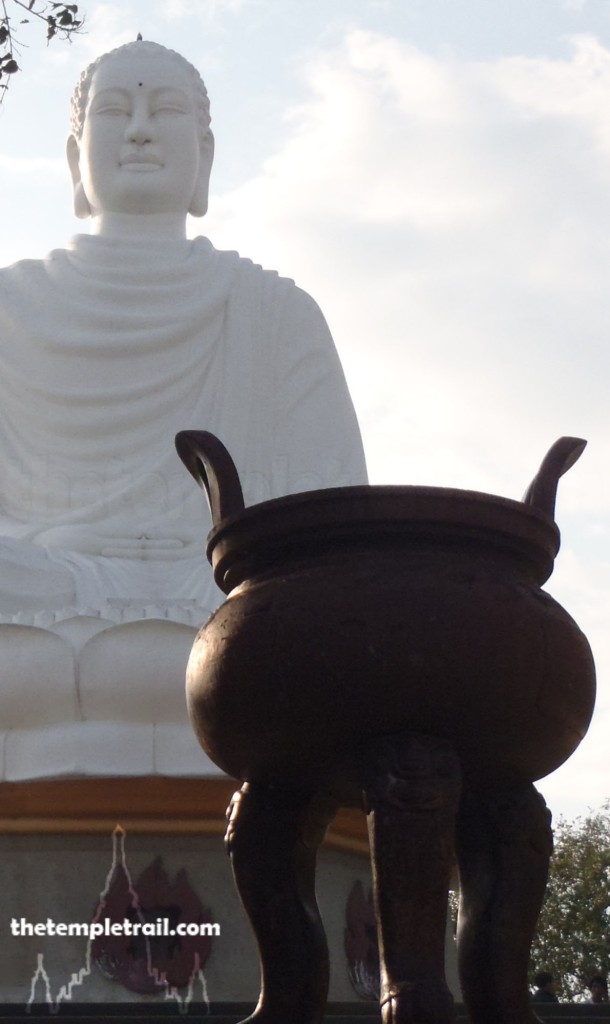
The base of the statue has seven fire ringed portraits of martyr monks. In June 1963 the monk Thích Quảng Đức calmly walked out to a busy Saigon intersection and set himself on fire. The photo of this monk’s protest against the tyranny of the Diệm regime became an international scandal. Following Thích Quảng Đức’s self-immolation, six more monks followed suit. Within five months, the previously US-supported Diệm was dead in the back of an armoured car, assassinated by the military. Thích Quảng Đức and his fellow martyrs are immortalized here, at the temple that is now dedicated to them and the stand they made against religious persecution. Circling the statue, you take in their faces that are haloed and framed by flames.
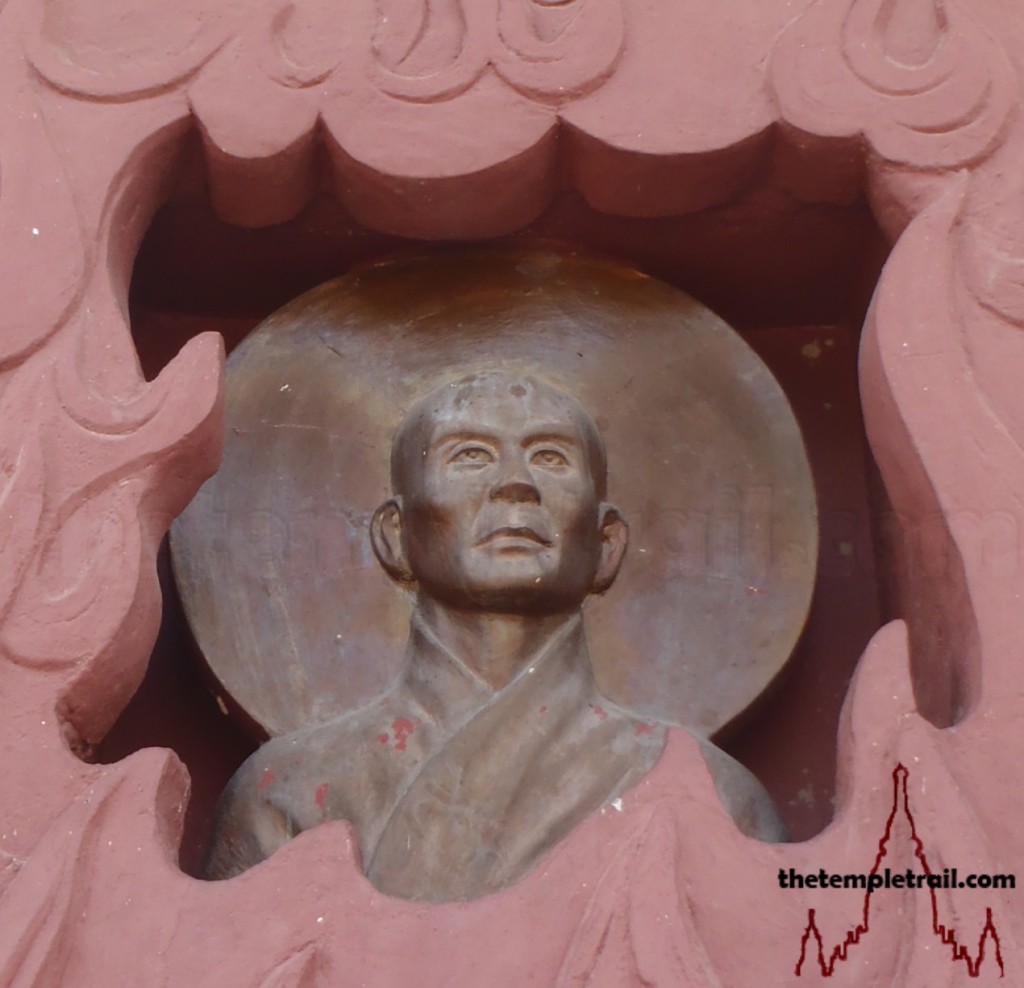
Walking into the base of the statue, you stand in what was once a library, but now houses a small shrine with relief sculptures of the arahants (Buddhist saints and followers of the Buddha). The library was closed down by the South Vietnamese government just after the Tet Offensive of 1968. The room was secretly being used by the southern Việt Cộng rebels as a command base for strikes against the government. The events that have taken place in the recent history of Long Sơn have all happened during the leadership of the third abbot of the temple. Thích Chí Tín has been the abbot here since 1957 and his stable leadership has survived very turbulent times. In the end, peace has prevailed.
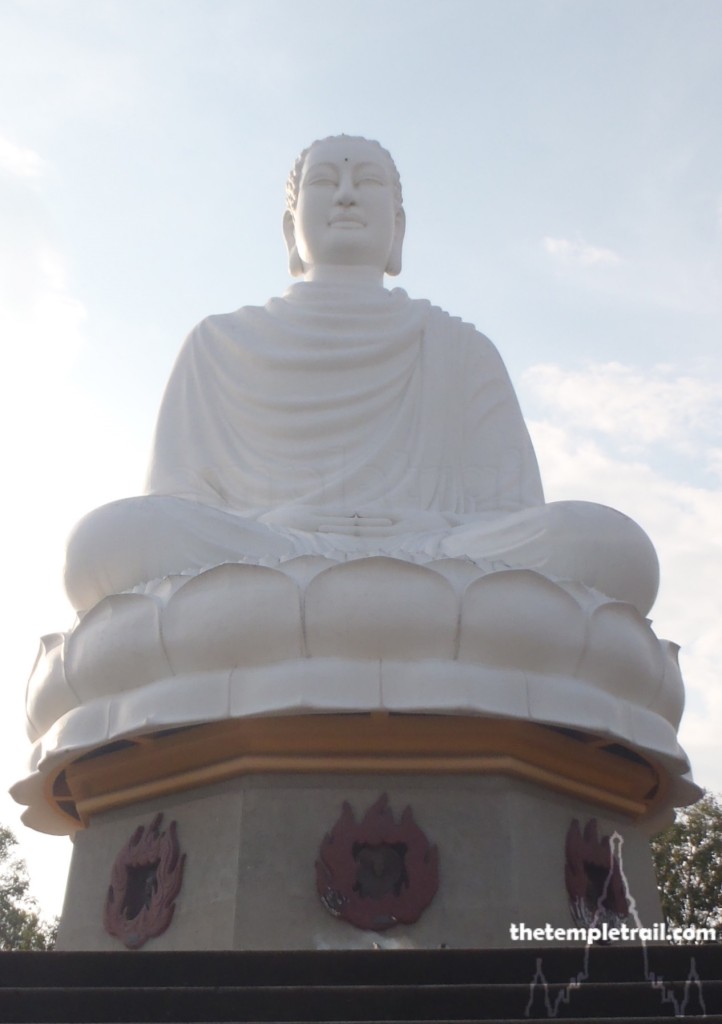
Standing next to the statue, your view over Nha Trang is unrivalled. The small city of less than 400,000 inhabitants has seen many changes. From the Kingdom of Champa, to wilderness, to beach resort via insurrection and war, the city is now a glittering oasis in central Vietnam. Here, amid the trees and votive architecture, you can feel the tranquillity that has finally come to Nha Trang and the pagoda. It is at last reaping the rewards of its hard-fought past. Reluctantly descending the mountain, you head back towards the seafront to watch the night come fall and enjoy the bounty of the clear blue waters that have sustained the city throughout all of its ups and downs.
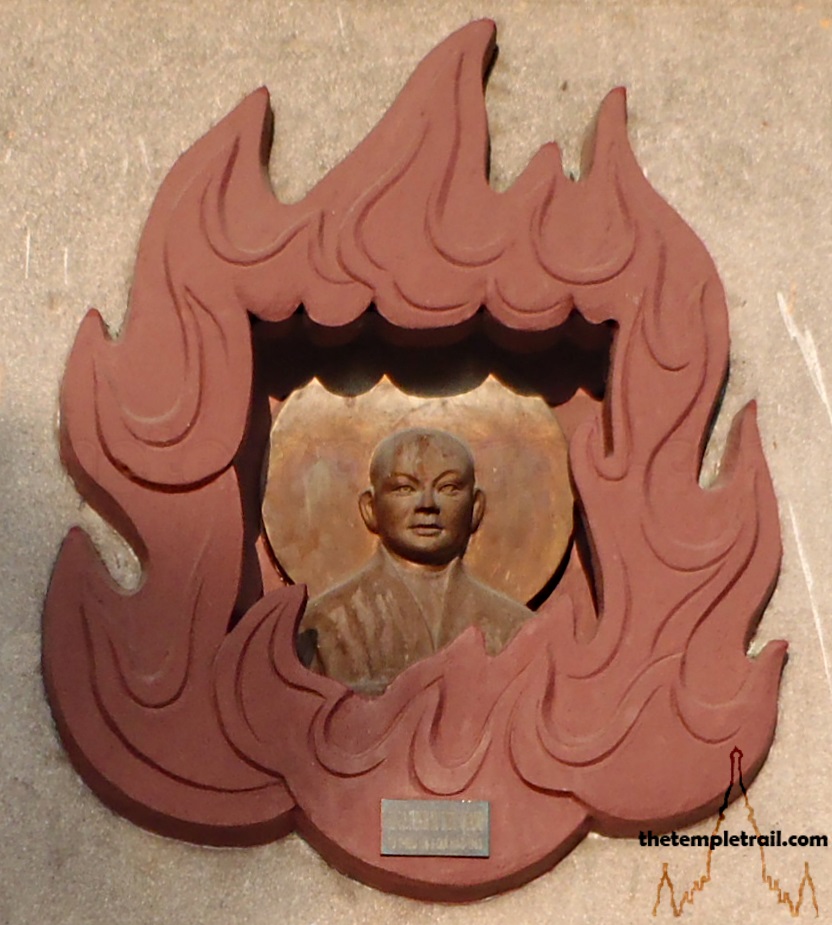
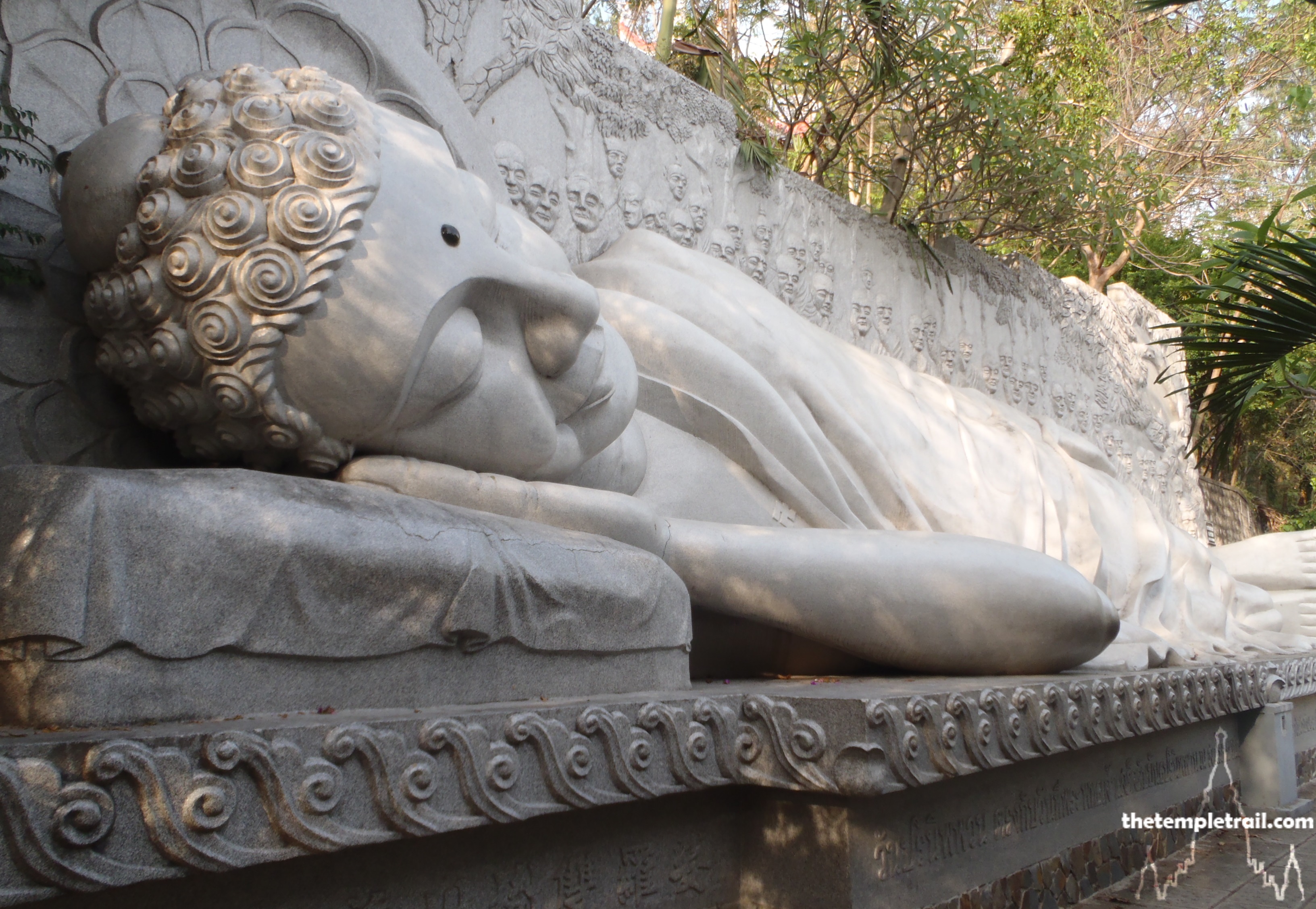
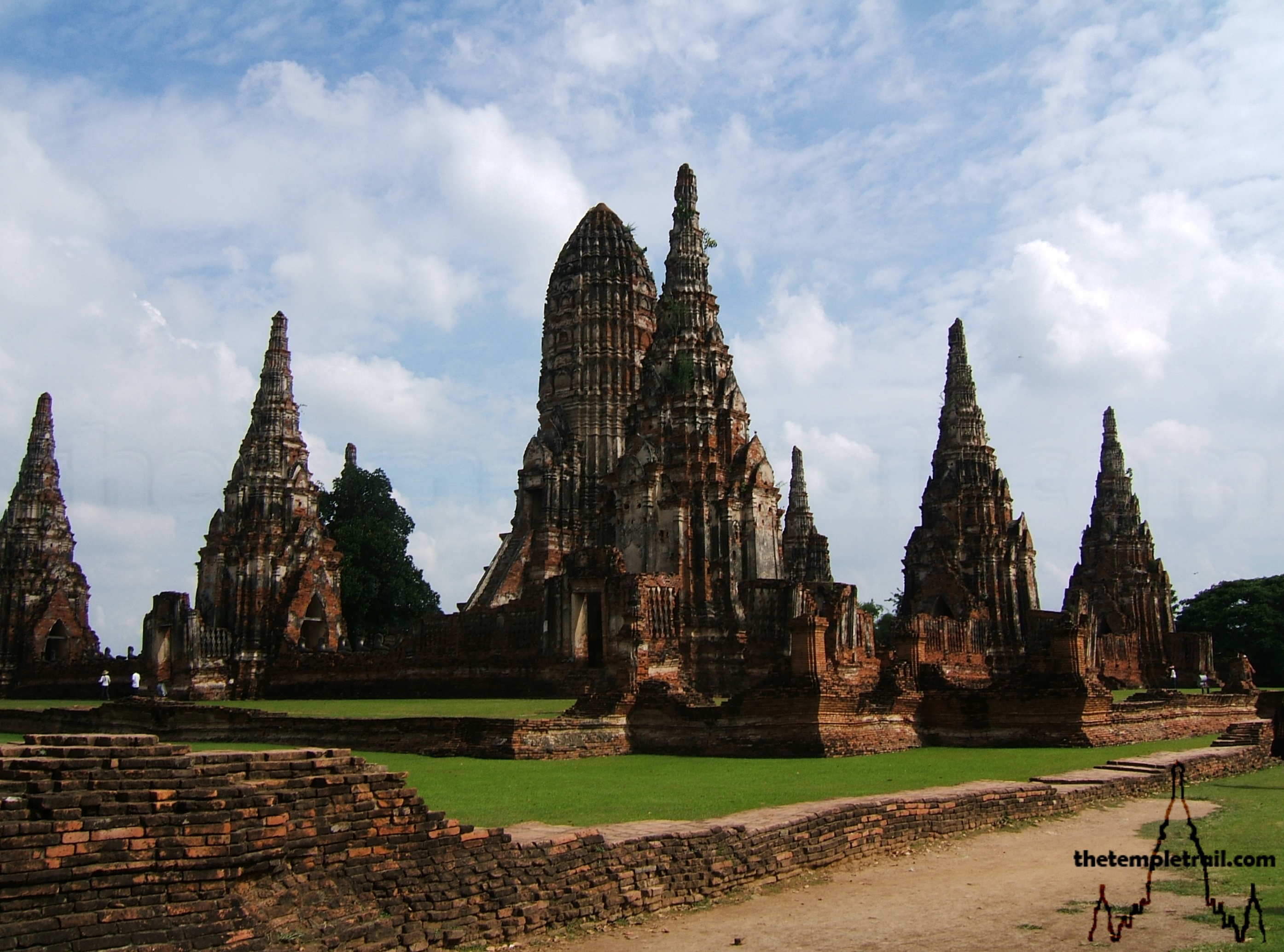 Wat Chai Watthanaram
Wat Chai Watthanaram
though ive been to “the big budda” more times than i could count i never really have taken much time to view it as you have.
i , in fact, view it in a much different light and untill reading your report knew little of its history , that is , again, from your point of view….
my expeirience there has been / is far different …i too have writen about “long son” but as i with your report, you would not recognize it as the same place….
it is in fact quite a dicotomy…..if you ever go back i home you will take the time to see the other reality there..
thanking you for your take on one of my favorite places to be,
sincerly , joe sciacca
Hi Joe
Thanks for your comments. I know that you know Vietnam more intimately than most and I would love one day to be able to hear some more of your takes on a few of my favourite places there. I am glad that you enjoyed reading my article and I really appreciate you taking the time to let me know what you thought. I am a huge fan of the work that you have doing in Vietnam and I wish you all the best.
Tom